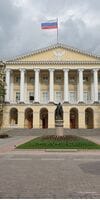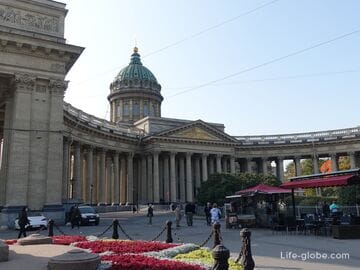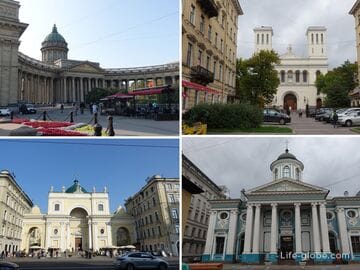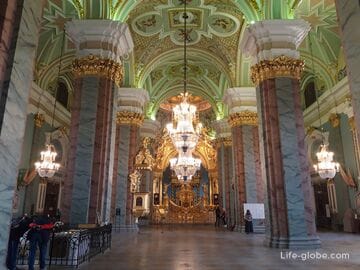The Smolny Institute of Noble Maidens is a historic building in St. Petersburg in the style of Russian classicism, which now houses the Government of St. Petersburg and operates the Smolny Historical and Memorial Museum.
The building is adjacent to a beautiful garden-parterre Smolny.
The former Institute of Noble Maidens is part of the ensemble of the Resurrection Smolny Cathedral, which is one of the oldest churches in St. Petersburg and a landmark of the city, made in the style of Elizabethan Baroque.
The cathedral was consecrated on July 20 (August 2, new style), 1835, 87 years after the foundation stone was laid in 1748 by the will of the Empress Elizabeth Petrovna.
Now the cathedral is an active Orthodox church, and in one of its belfries there is an observation deck, which is the second highest in the city.
The cathedral is surrounded by a former monastery.
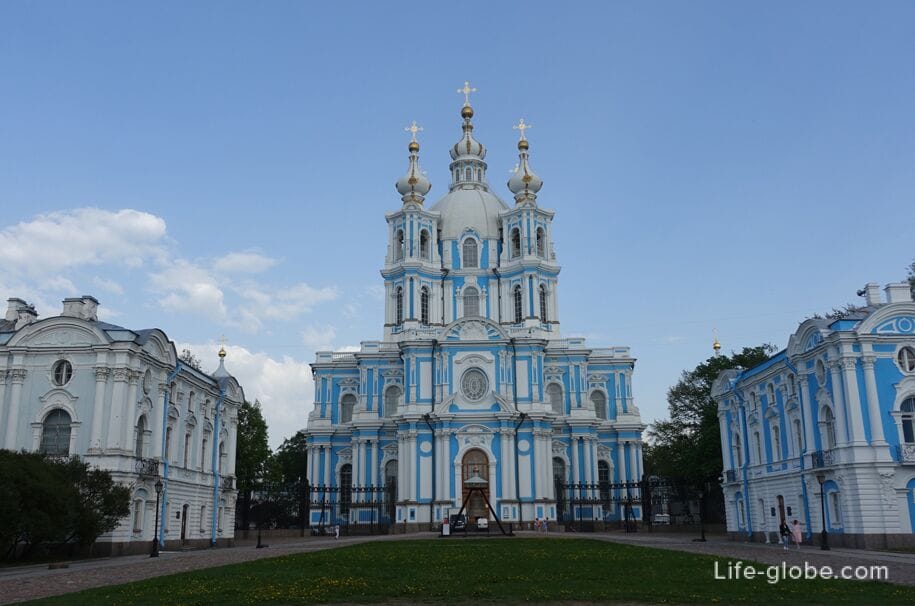


The Institute of Noble Maidens was established by the Empress Catherine II in 1764 and became the first women's educational institution in Russia, which marked the beginning of women's education in the country.
The building of the Institute was built in 1806-1808 in the style of Russian classicism by the Italian architect Giacomo Quarenghi.
Since 1808, the building housed the Imperial Educational Society of Noble Girls, where girls of noble origin lived and were brought up.
The Institute of Noble Maidens existed in Smolny for more than 100 years, and since 1917 the political history of the building began. The first workers 'and peasants' revolution took place within the walls, and the first Soviet government was established. The historic Second Congress of Soviets was held in Smolny, where Vladimir Ilyich Lenin lived and worked.
From March 1918 to the early 1990s, Smolny was the center of the political leadership of Leningrad and the Leningrad Region. The walls housed the regional and city committees of the CPSU.
The underground floors of Smolny during the siege of Leningrad (World War II) were used for the work and stay of the highest party, military and economic leadership of Leningrad. In the bomb shelter (bunker), located at a depth of 12 meters under the square located between the Neva River and the Smolny building, during the war, meetings of the Military Council were held, the heads of the Leningrad City and regional committees of the CPSU(b) A. A. Zhdanov, A. A. Kuznetsov, the commanders of the Leningrad front K. E. Voroshilov, G. K. Zhukov and others worked.
Today, the former building of the Institute of Noble Maidens of Smolny is a monument of architecture and history, as well as part of one of the most important and beautiful ensembles of St. Petersburg-the Smolny Cathedral ensemble.
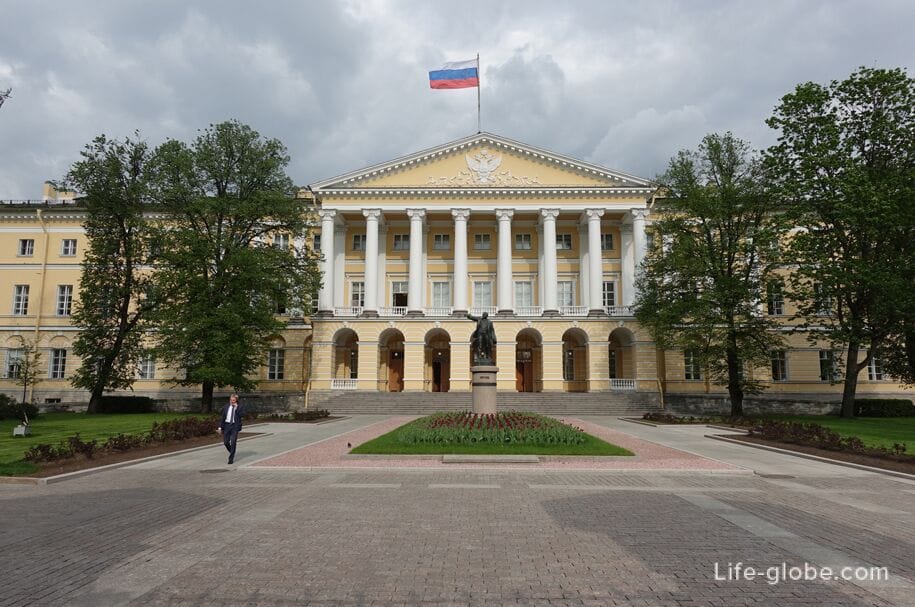
View of the former Smolny Institute of Noble Maidens from the observation deck in the belfry of the Smolny Cathedral
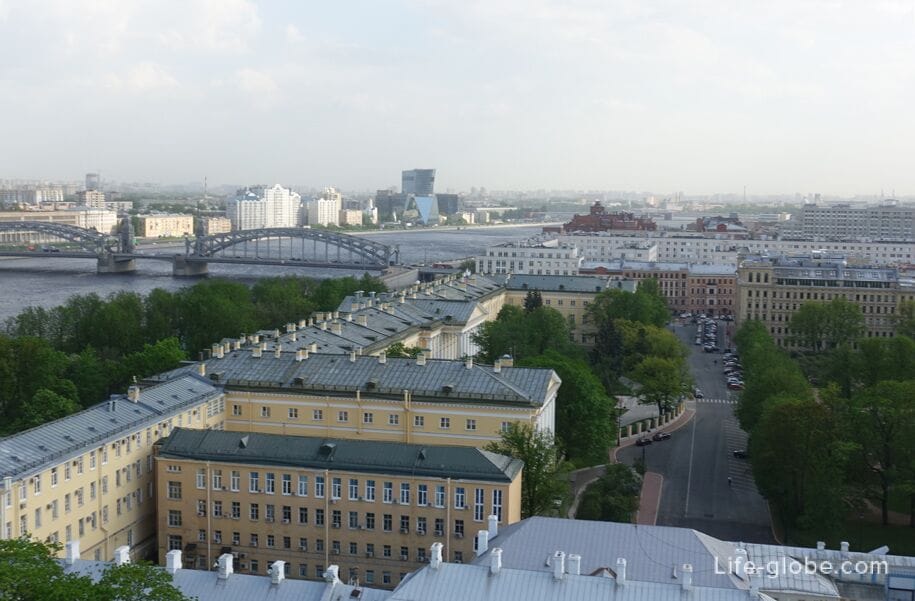
Now the former institute houses the Government of St. Petersburg and operates the Smolny Historical and Memorial Museum.
Smolny Historical and Memorial Museum
The museum's exposition is located in some of the halls of the former Institute of Noble maidens, including underground rooms and a former bunker.
The museum exposition tells about the creation and development of the first state women's educational institution in Russia. The exhibition includes authentic items (clothing exhibits, documents, books and photographs) dedicated to Smolny as an educational institution, which are complemented by a reproduced corner of the music salon and the preserved interior of the classroom lady's room.
A significant part of the museum is occupied by the Lenin Memorial complex, which presents: the study of V. I. Lenin and the room in which he and his wife, N. K. Krupskaya, lived in Smolny from November 1917 to March 1918.
The permanent exhibition of the museum is "Corridors of Power. Thirteen first", tells about the thirteen secretaries of the city Committee and the regional committee of Leningrad, who were at the head of the city from 1918 to 1991-from Grigory Zinoviev to Boris Gidaspov. Among the exhibits: personal belongings, photos and documents of the city leaders, as well as a video with footage from the life of St. Petersburg-Petrograd-Leningrad; recreated part of the office of the first secretary of the regional committee. The exhibition also contains materials dedicated to the high-profile political murder of the head of the Leningrad party organization, Sergei Mironovich Kirov, which occurred in Smolny on December 1, 1934.
Part of the exhibition "Underground floors of Smolny. War and blockade. 1941-1945." represents a genuine strategic structure designed for the work and stay in it of the highest party, military and economic leadership of Leningrad during the Great Patriotic War.
In the bomb shelter (bunker), on an area of 800 square meters, the situation of the life and work of party and Soviet leaders during the war and the siege of Leningrad is recreated: Zhdanov's office, the room of the Military Council of the Leningrad Front, the medical office, the duty room for NKVD officers, household rest rooms and a dining room.

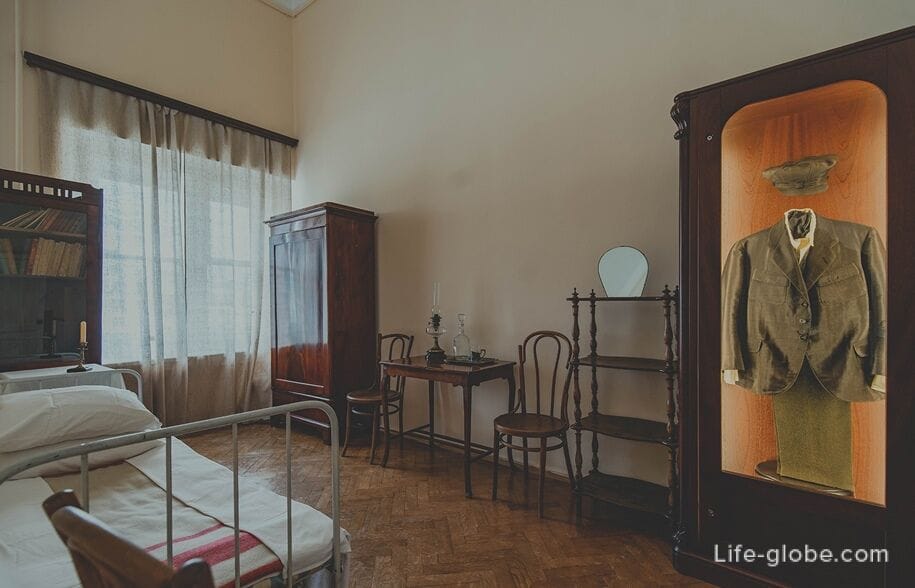
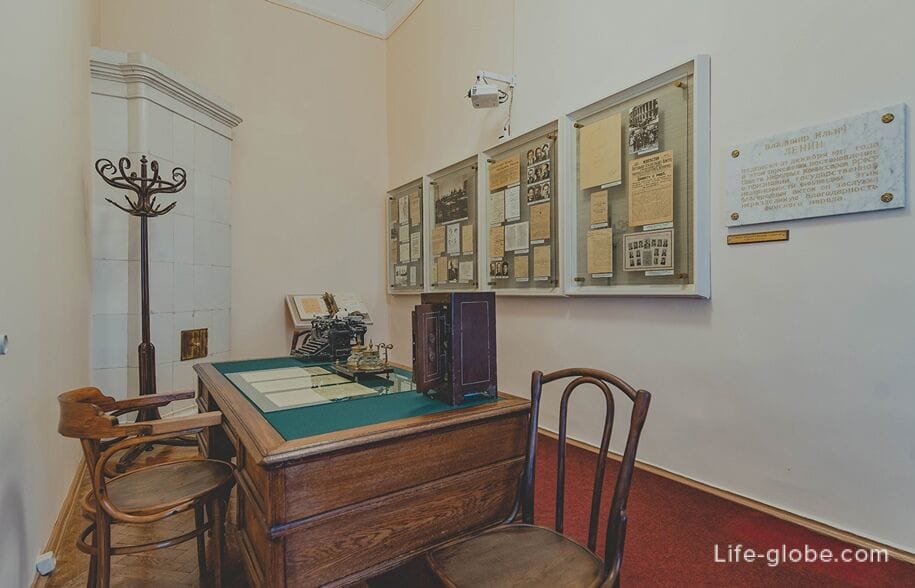
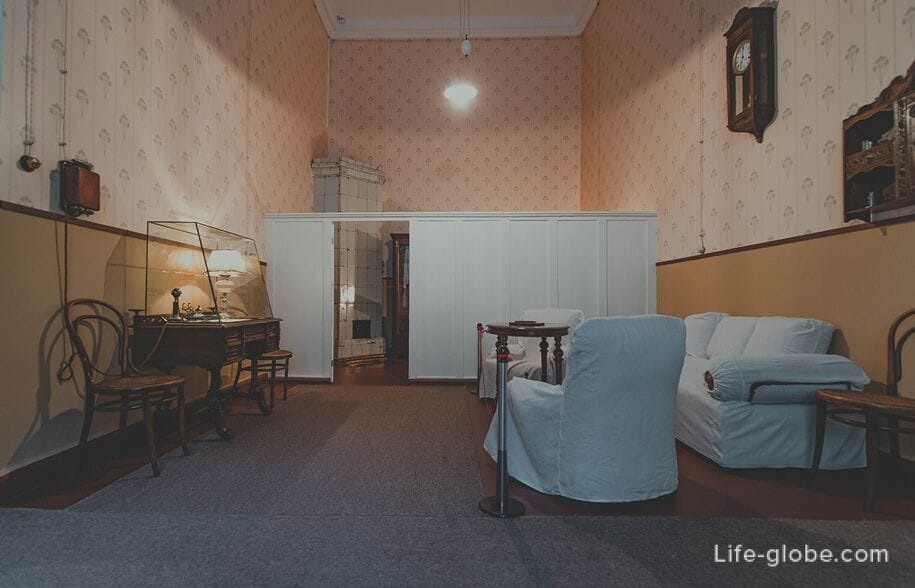
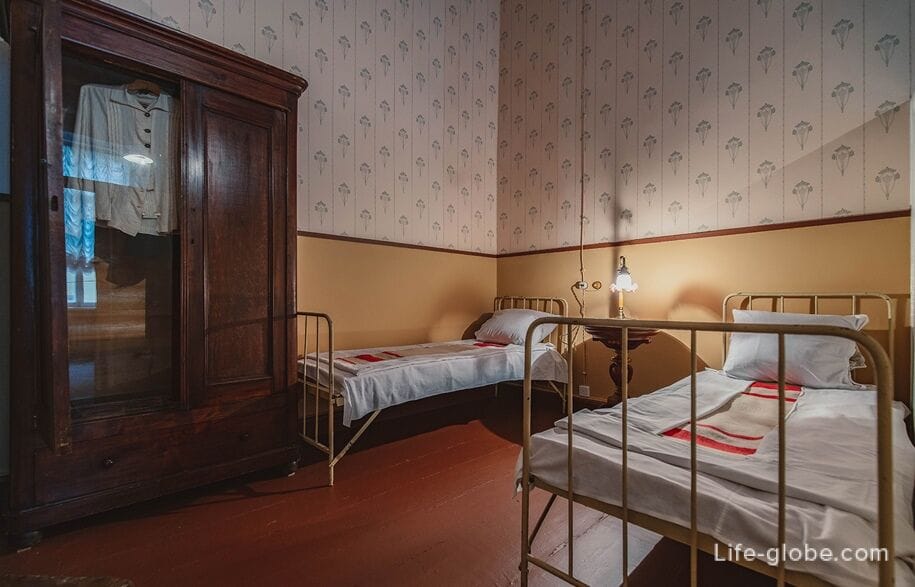
You can visit the Smolny Museum with a tour of the representative record.
The Smolny Museum is a part of the Smolny State Historical and Memorial Museum.
For information about excursions, the cost and conditions of visits to the museum, please check the official website of the Historical and memorial museum: smolny-museum.
Address of the museum: Smolny proezd, 1, letter B.
Smolny Parterre Garden
At the main entrance to the Smolny building there is a beautiful garden-ground floor of Smolny.
The entrance to the garden is free (free of charge).
For the first time, the garden in front of the Smolny Institute of Noble Maidens in the form of a square was laid out in 1864 and was called Adlerbergsky Square, in honor of Yulia Fyodorovna Adlerberg - the head of the Smolny Institute in 1802-1839, a state lady of the Russian Imperial Court. The name "Adlerberg Square" is still often used today.
In 1923-1934, during the reconstruction of the territory in front of Smolny, designed by Vladimir Shchuko and Vladimir Gelfreich, a garden-parterre was created on the site of the square. The author of the parterre garden was the architect and gardener Rudolf Katzer.
Today it is a regular garden with alleys for walking, fountains, flower beds, busts of Karl Marx and Friedrich Engels, places for recreation and Smolny Alley.
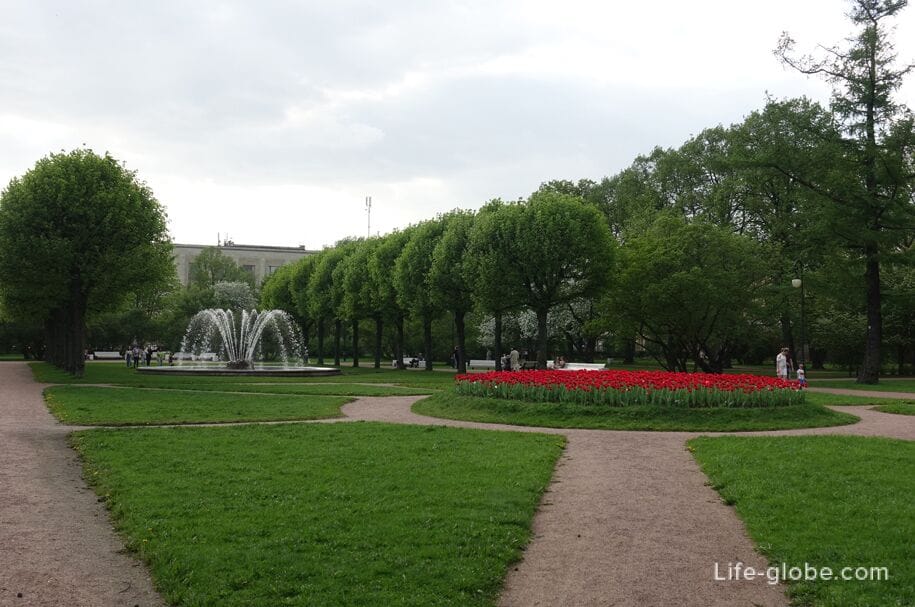
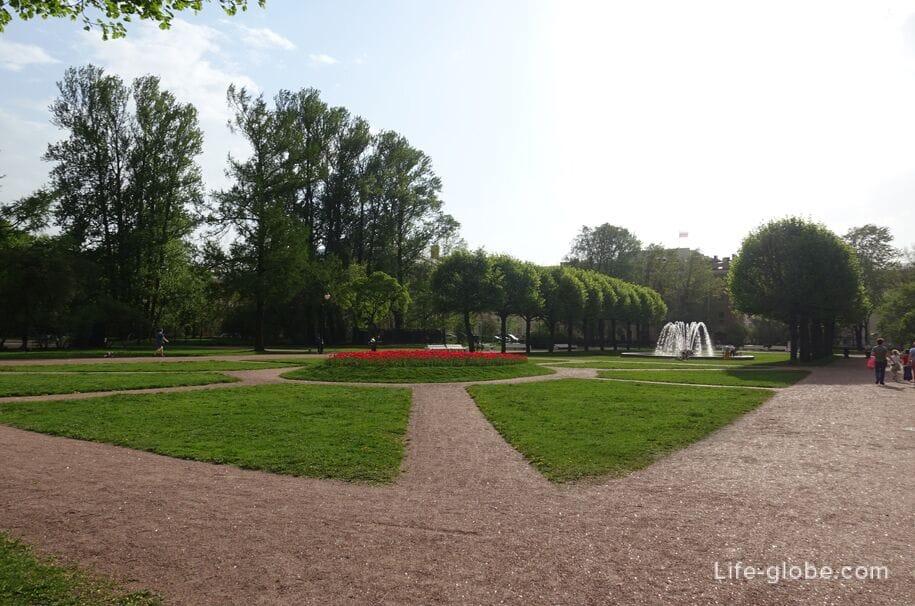
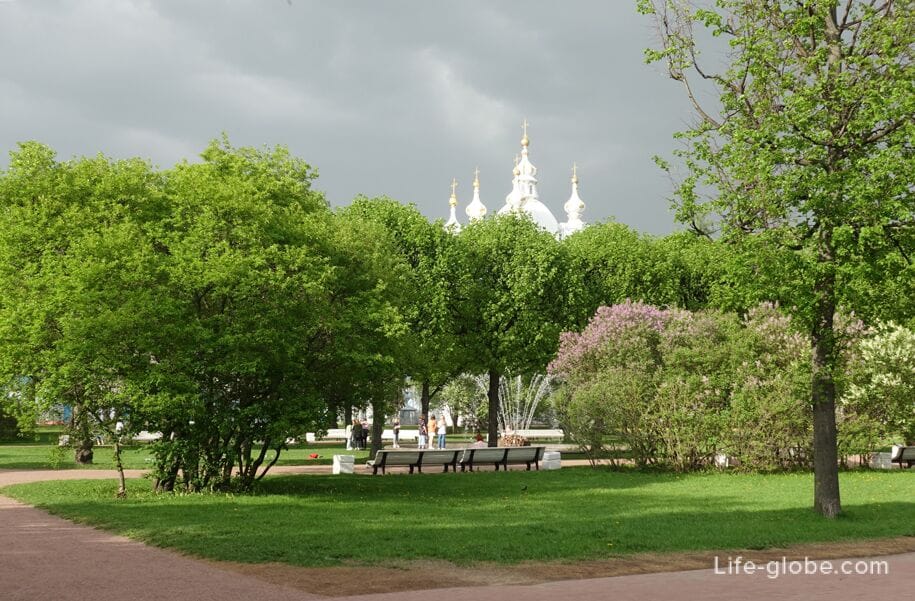
Smolny Alley
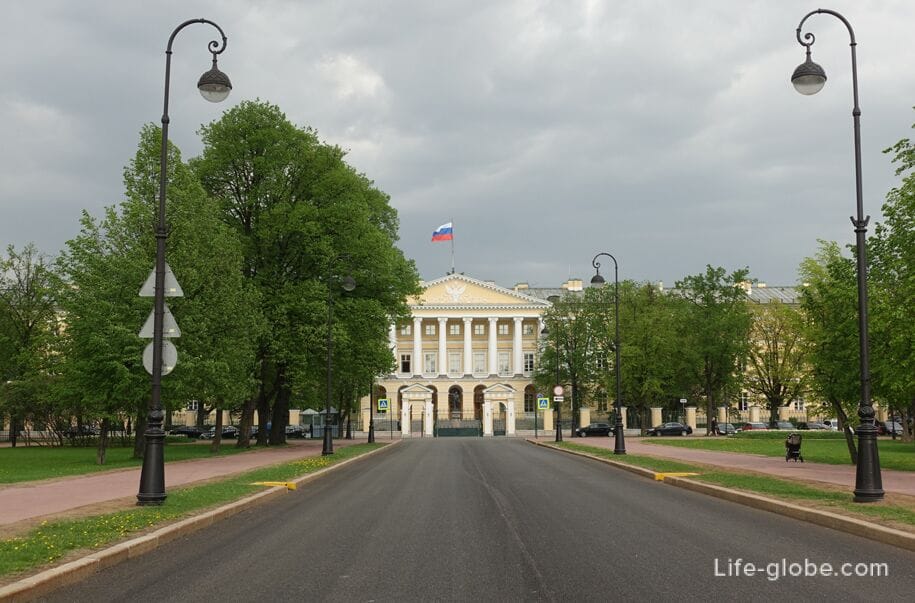
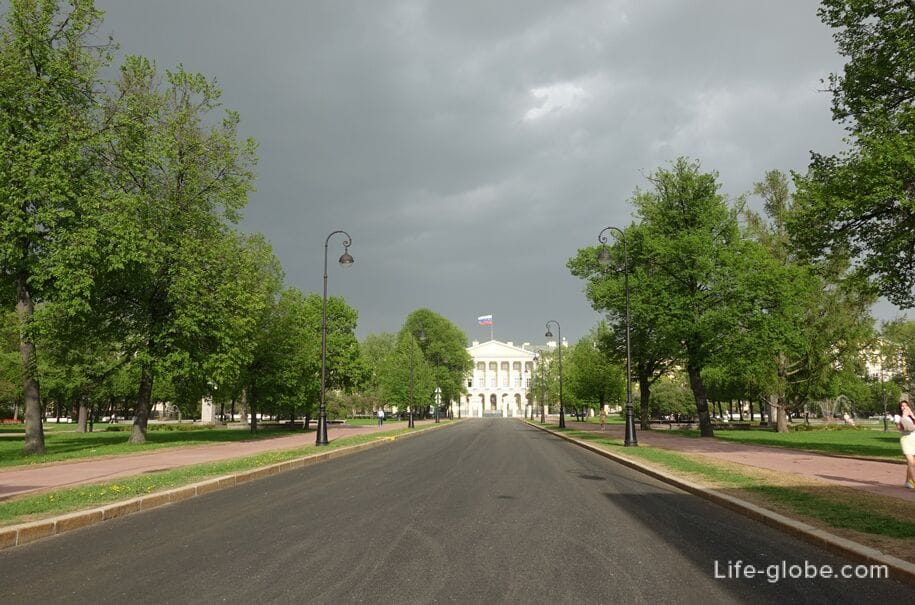
In the garden there are four identical fountains, which are large round bowls with brown slides in the center, from which water jets gush.
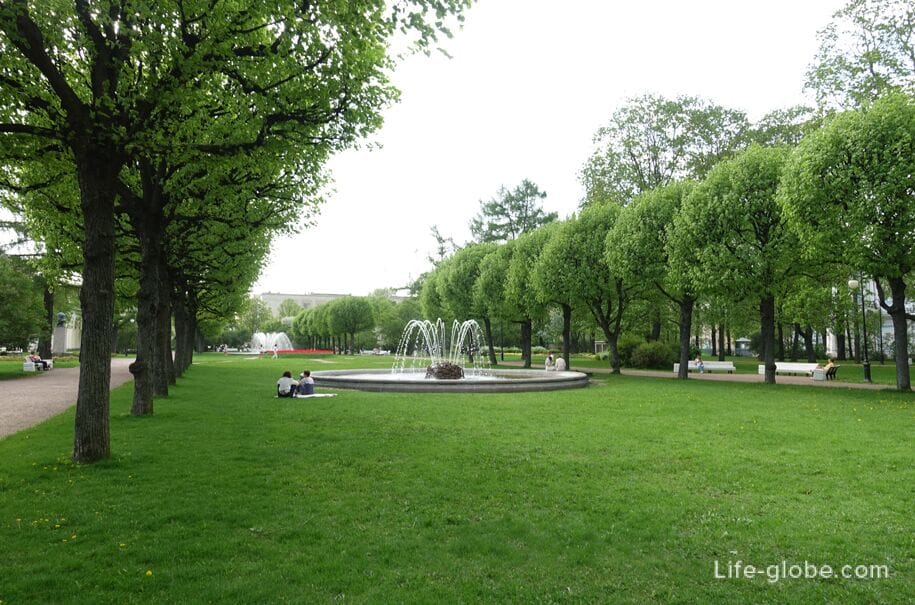
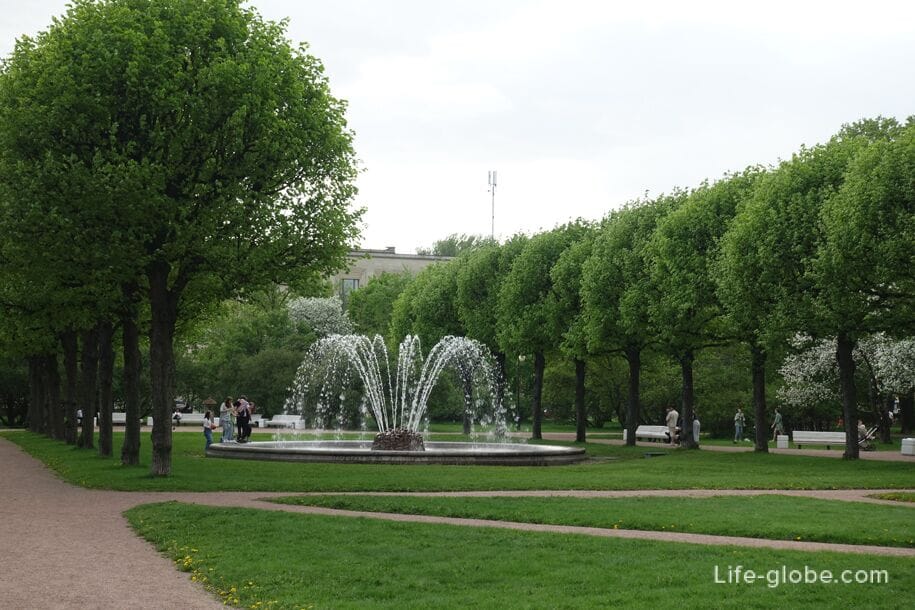
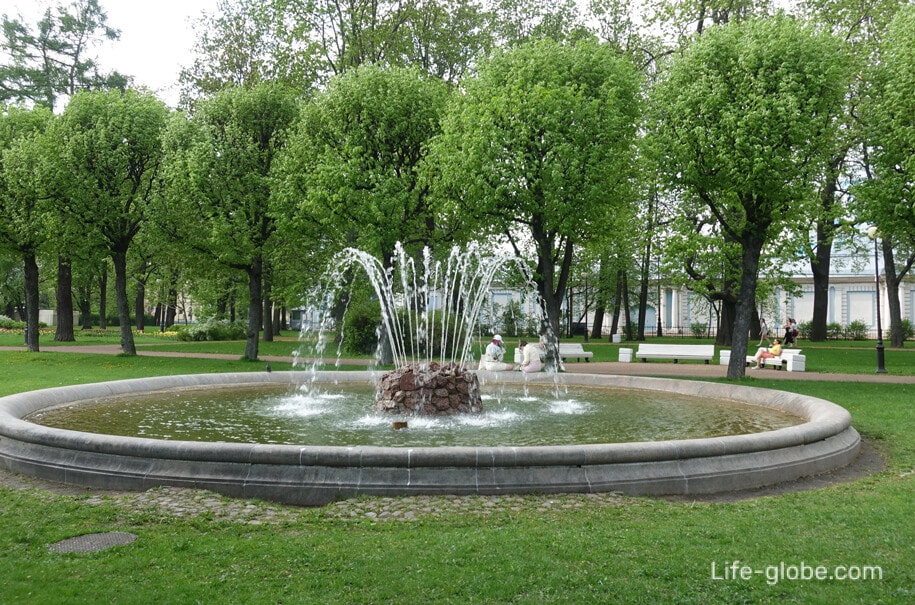
Busts of Karl Marx and Friedrich Engels, mounted on high pedestals.
The busts were installed in the garden in 1932; they were made by the sculptor Stepan Evseev, and the pedestals made of gray granite were made according to the drawings of Shchuko and Gelfreich.
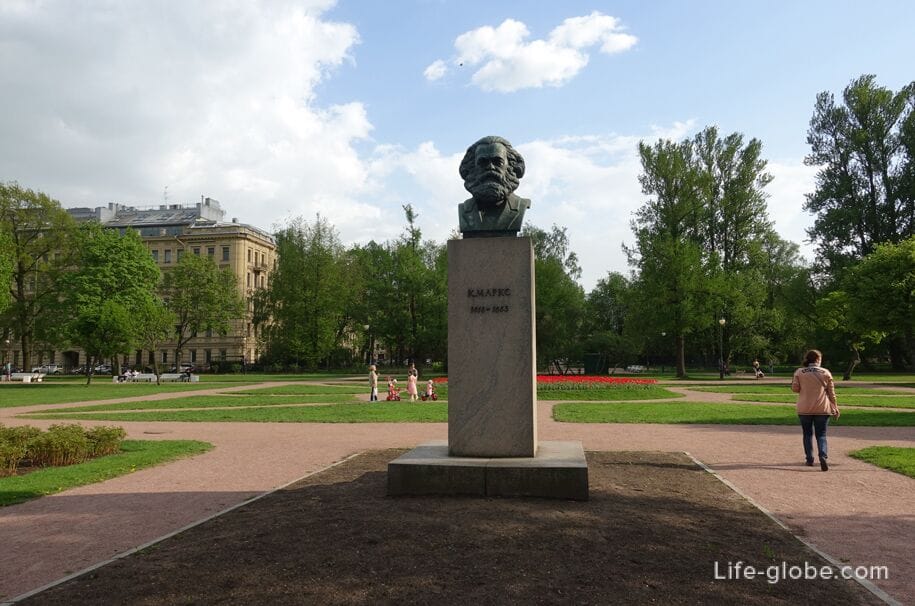
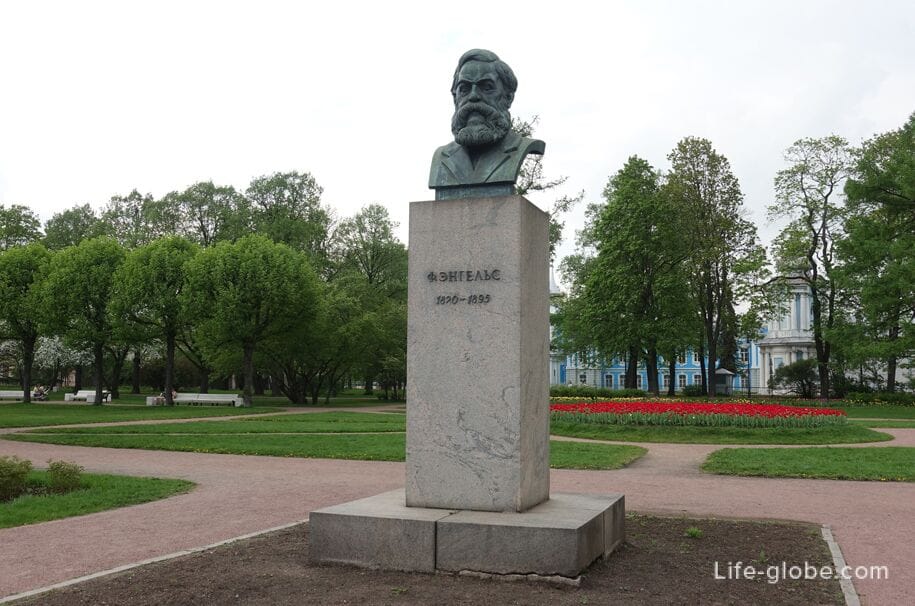
The central entrance to the garden is decorated with two separate buildings-five-column propylaea, marking the entrance/entrance to Smolny Alley, leading to the building of the Institute of Noble Maidens.
On the propylaeum are inscriptions: "Proletarians of all countries, unite!" and "The First Council of the Proletarian Dictatorship".
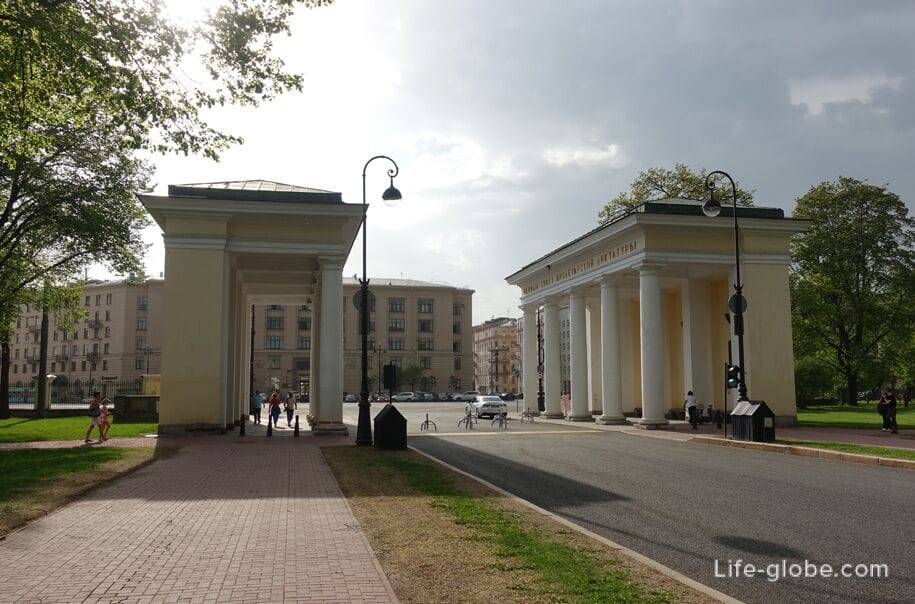
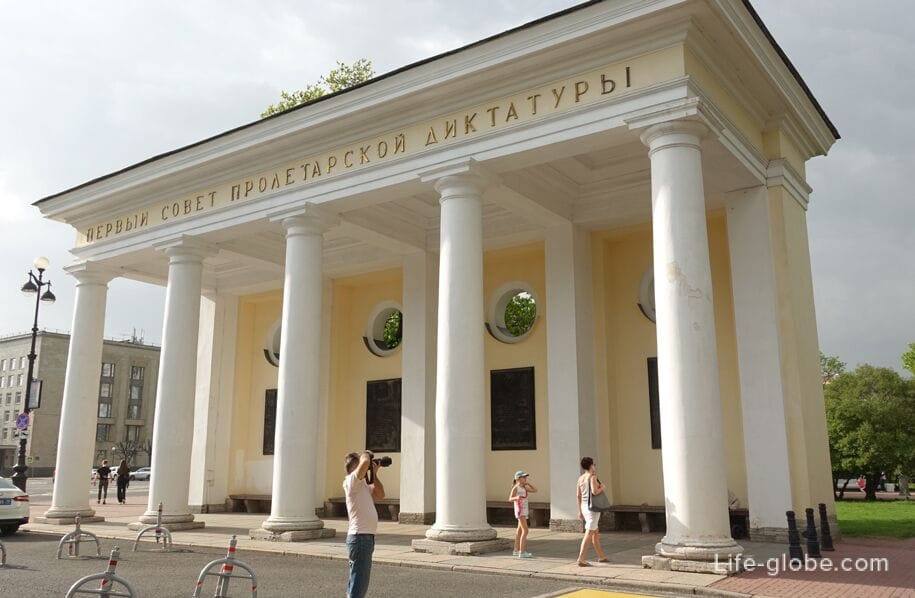
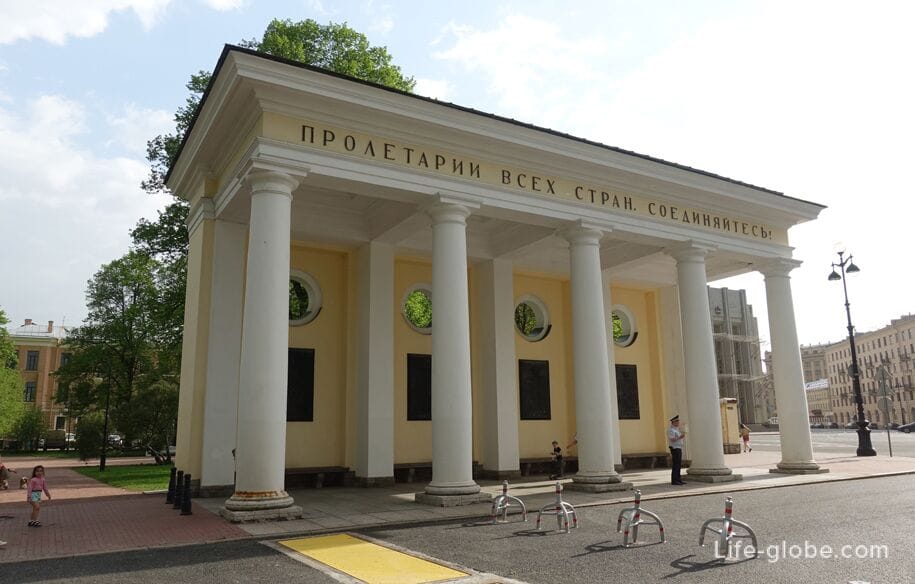
Practical information
The building of the Institute of Noble Maidens is located near the left Smolnaya embankment of the Neva River, at the address: Smolny proezd, 1.
Nearest metro stations: "Chernyshevskaya", "Ploshchad Lenina" and "Novocherkasskaya".
All accommodation facilities in St. Petersburg, including in the city center, near Smolny and more remote from those, can be viewed and booked here




